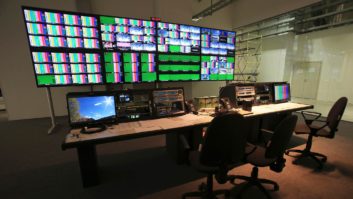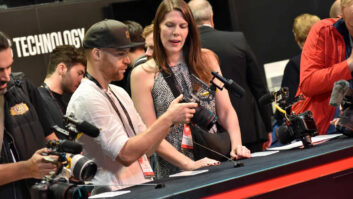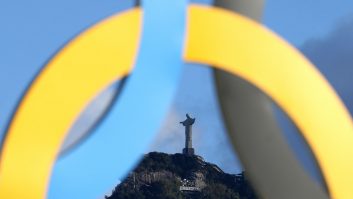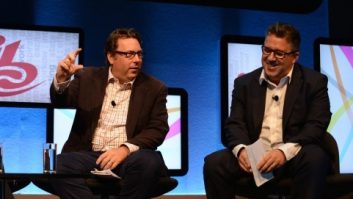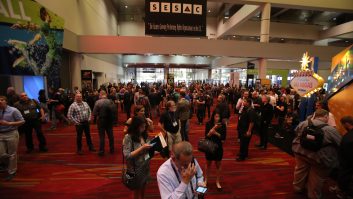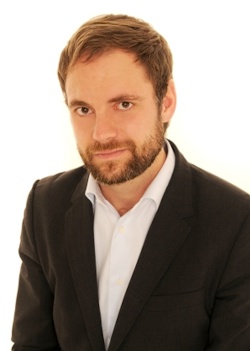
Swedish telco Teliasonera is working to deliver a remote production of the 2012 Olympic Games in a model that it believes could eventually dominate live outside broadcasts, writes Adrian Pennington. A European broadcaster (to be announced in a few weeks) will be taking live studio feeds, routed over Teliasonera’s fibre network, for production and mixing with the Olympic World Feed at the broadcaster’s domestic HQ. “They save the cost of sending staff and producers and they get economies of scale,” says Teliasonera’s UK MD Dan Pope (pictured). “We are looking at doing this with other sites as well. This solution effectively replaces the need for an OB truck and OB production team.” Teliasonera has teamed with Aberdeen House, a facilities service provider that has taken over space on the perimeter of the Olympic Park and built an 11m high structure containing eight TV studios with a backdrop of the Park. Broadcasters from Scandinavia, Japan, Korea and Brazil will use it to create studio content for their Games’ coverage. One of these broadcasters will be taking up to four feeds back by fibre into continental Europe. At IBC2011 Teliasonera demonstrated the remote production in Amsterdam of a tennis tournament shot using four cameras live in Stockholm. “People have performed similar remote production on metro area fibre networks, but our IBC demo was the first time anyone had done this long haul,” said Hope. “We will extend the distance during the Olympics.” He added: “When you look at this concept in detail we are providing an exact replica of what would normally be done in an OB truck. Graphics and other parts of the process have typically been added remotely, but the difference here is that literally every single function in a truck can and has been moved to wherever you want it. “You can only do so on a fibre-based network using JPEG2000. Even though a four-camera production does use up a bit more bandwidth, JPEG2000 is incredibly suitable for this sort of application because of its low latency and minimal delays.” The latency of a return path over dark fibre between London and Stockholm, said Pope is “the odd millisecond. London to New York around 70ms and any further afield 300-350ms. A satellite round trip path would be at least a second or longer.” World Cup Teliasonera is already speaking with suppliers in Rio, Brazil ahead of the FIFA World Cup 2014. “The challenge we always face as a fibre provider is that, while we operate a global network and invest billions of pounds in it, it is the last few kilometres that kills us where local providers can charge what they like. For us, it’s critical to secure a local partner. I was surprised that in Brazil the market is a lot more structured than I was led to believe.” Hope believes remote production will be initiated at one-off events where there is a high logistical cost of sending and housing staff and renting facilities for 2-3 weeks, or in places where it can be tricky to send an OB truck. However in the mid-term he thinks remote production will see regular use for top tier sports like soccer. “We have been talking to various leagues, particularly in the Nordics,” he said. “Typically, one OB truck is sent to each arena to cover a match. If there are three live matches a day that means three trucks and three sets of crew. In the longer term those resources can be used more efficiently by way of a central production facility, providing you stagger the games you can have the same production team doing all the matches for a single cost. “Of course, right now, broadcasters have invested in trucks and will want to get the most out of that investment, but when the truck comes up for renewal they may consider remote production.” Uptake also depends on scale. “If a production company can get to the stage where it has the scale to be producing live content on a 24-hour basis, then remote production should start to apply to tier two and three sports which probably couldn’t justify a TV production before because of the cost of sending out OB crews.” Pope cites basketball and handball as sports whose federations are interested in remote production as a way to obtain more exposure. The practicalities will change from country to country depending on roll out of dark fibre. In Sweden, the whole country is carpeted with it, but in the UK it can be expensive and difficult to connect, he said. Teliasonera’s global fibre network has been built on the Net Insight MSR Nimbra platform. www.teliasonera.com
